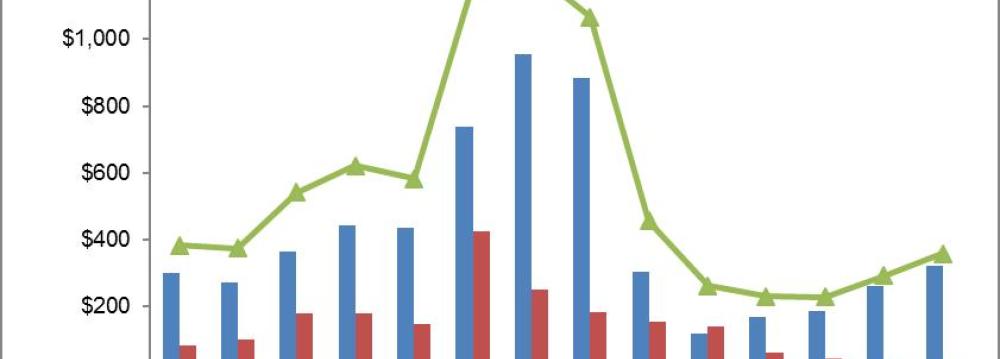Pakistan is serious about its preferential and free trade agreement with Iran, in the quest of an elusive exponential increase in exports.
Pakistani policymakers hope for significant jumps in foreign trade, especially exports, as they enter round after round of negotiations with their international trading partners.
A report on the issue, published by Pakistan’s biggest financial daily Business Recorder on Tuesday, follows:
A case in point is the current PTA with Iran whose second phase of negotiations concluded last week. Pakistan and Iran hope to increase their $359 million trade in 2016 to $5 billion by 2021.
In 2004, Pakistan and Iran signed the PTA that came into effect in 2006. As per data from the International Trade Center’s Trade Maps, Pakistan’s bilateral trade with Iran increased from $622 million in 2006 to $1.2 billion in 2009, a 194% jump post-PTA implementation.
Despite the increase in trade, bilateral trade with Iran comprised just 2.5% of Pakistan’s global bilateral trade, with exports to Iran accounting for 1.4% of Pakistan’s total exports. The only significant export to Iran was that of rice with 12% of Pakistan’s exports finding a market in Iran.
In 2011, sanctions were placed on Iran and trade tapered off, not recovering even when they were lifted in 2013. For bilateral trade to increase from the current level to $5 billion in the next four years, the jump needs to be nearly 14 times!
Let us look at the exports to Iran for now. Going through the product lines, the highest potential of increase in trade is of rice exports to Iran. At the peak of Pakistan’s exports in 2009, the top export to Iran was $200 million of rice that constituted nearly 80% of Pakistan’s exports to Iran.
Pakistan produces roughly 700,000 tons of rice annually and is a leading producer of Basmati and non-Basmati rice regionally. While Basmati rice is considered a premium high-end rice, enabling Pakistan to earn more forex, Iran is also a market for non-basmati rice. Since the decline in non-Basmati variety has caused some concerns, the Pakistan-Iran PTA in the works may give it the much needed boost.
Pakistan’s top export in 2016 included $19 million worth of paper and paperboard while rice exports fell to $8.3 million due to the sanctions placed in 2011. On the other hand, Iran’s rice imports from the world stood at $517 million, 97% of which were from India, since India circumvented the sanctions by using a barter model of trade that would not suit Pakistan.
Currently, other than rice, Pakistan has the potential to increase exports of medical instruments, since Pakistan’s current exports to Iran are limited to $780,000 whereas Iran’s imports globally were $147 million in 2016. As Sialkot’s surgical goods industry is one of Pakistan’s success stories, reduction in tariffs of medical instruments should be negotiated to become a part of the PTA.
Another product that Pakistan has potential to export to Iran is cotton fabric. Woven fabrics of cotton are a significant export of Pakistan, but exports to Iran are non-existent, whereas Iran’s imports from the world were $42 million in 2016.
Similarly, there is a long list of Pakistan’s exports that the country is currently not exporting to Iran, but which Iran is importing from other countries. In the past, Pakistan’s exports have been limited to a single top export to Iran but the PTA is an opportunity for Pakistan to increase its basket of exports.
However, if Pakistan insists on putting all its eggs in one basket as it usually does, the PTA is not likely to give a significant increase in exports, much less reach the naively optimistic goal of $5 billion of bilateral trade.


